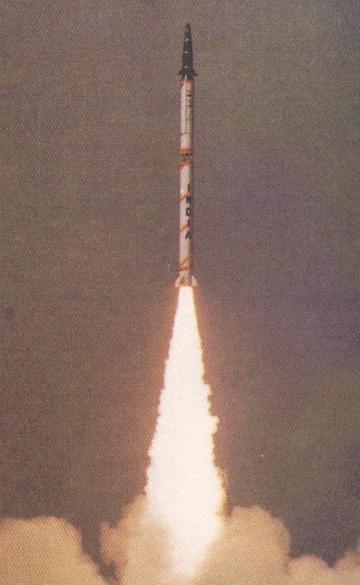
NEW DELHI: India on Tuesday tested its K-15 submarine-launched ballistic missile (SLBM) from a submersible pontoon launcher off Visakhapatnam, amid some indications that the test was "not fully successful".
Sources said the missile, which has a strike range of 700km, did not meet all the pre-flight parameters laid down for the test conducted from the launcher submerged under the sea just before 1pm. On being contacted, DRDO officials refused to say anything, holding that only M Natarajan, the scientific advisor to the defence minister, could clear the position over the test-firing of K-15.
"A test like this, even though from a pontoon launcher and not an actual submarine, generates an immense amount of data... The exact position can be given only after a detailed analysis," said an official. It has taken around 10 years for India to even come to this stage of testing an SLBM, which has remained the preserve of the Big Five countries - US, Russia, China, France and UK.
DRDO chief controller Prahlada had told TOI earlier this month that this test would be the final test of K-15, which would then be ready to be integrated with the "mother ship". The "mother ship", of course, is a reference to the three indigenous nuclear-powered submarines being built at Visakhapatnam in the 25-year-old ATV (advanced technology vessel) project, which will overall cost around Rs 20,000 crore. The first of the three 6,000-tonne ATVs, each designed to carry 12 vertical-launched nuclear-tipped SLBMs, will be 'ready to go to sea' for trials by early 2009.
It will, however, take two to three years for the two-stage solid-fuelled K-15 to be integrated with the first ATV and then be test-fired from it.
When this happens, India will finally achieve its long-standing aim to have an operational 'nuclear weapon triad'. India already has Agni-I (700-km range) and Agni-II (2000-km-plus) ballistic missiles, as also the Agni-III (3,500-km) which has been successfully tested only once so far, as the land-based nuclear deterrent. Fighters like Sukhoi-30MKI and Mirage-2000s, which can be jury-rigged to carry nuclear weapons, constitute the air-based leg. But the absence of nuclear-powered submarines, armed with the capability of fire nuclear-tipped missiles from under the sea, has been a gaping hole in India's strategic capabilities.
The first test of Agni-III missile in July 2006, incidentally, had flopped miserably. Though the second test in April 2007 was successful, it will take at least three to four tests more for this China-specific missile to be fully-ready.
Wednesday, February 27, 2008
India test fires submarine-launched ballistic missile
Subscribe to:
Post Comments (Atom)
No comments:
Post a Comment